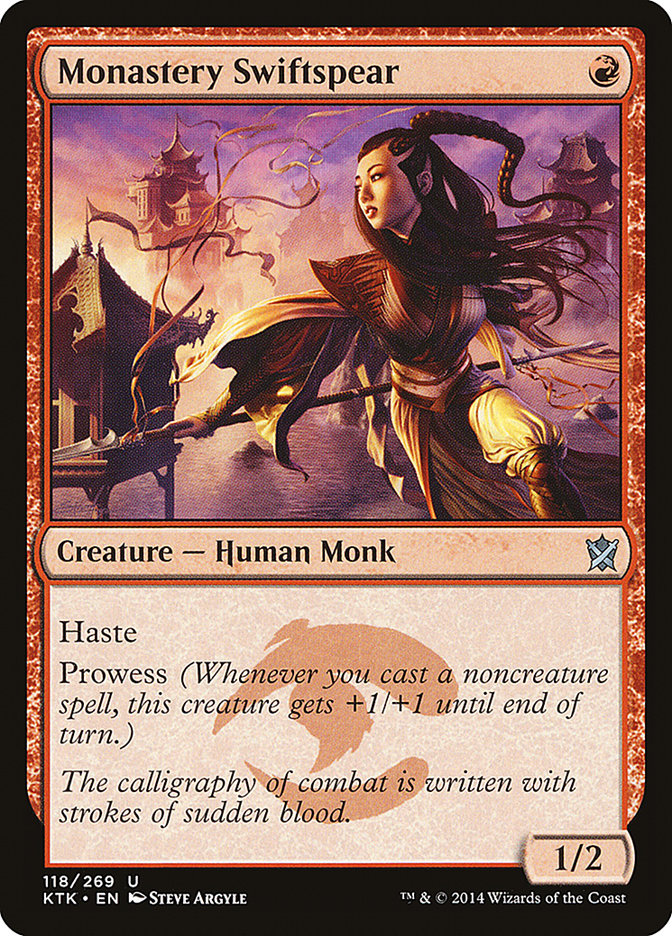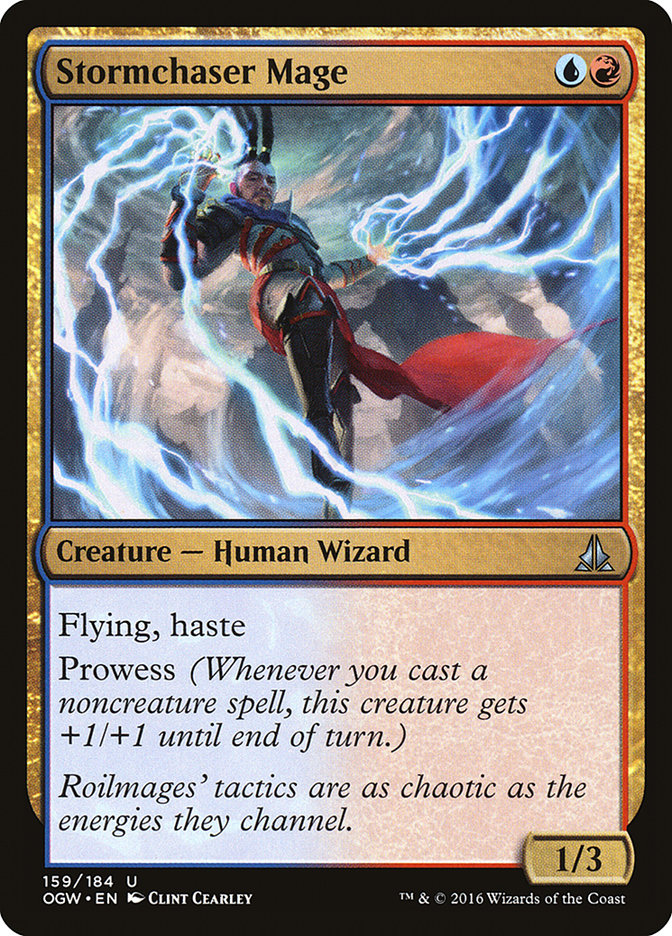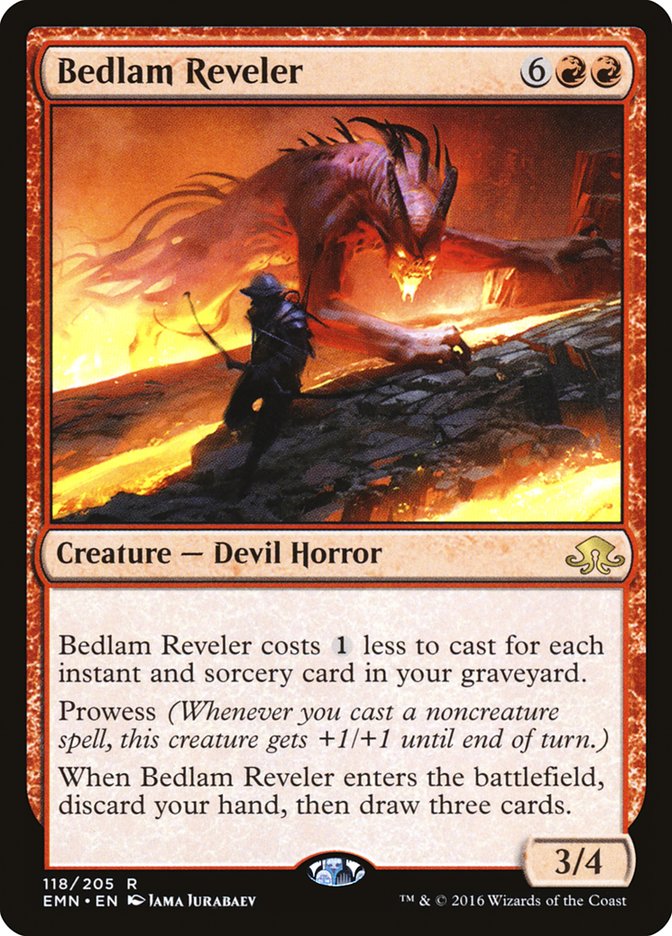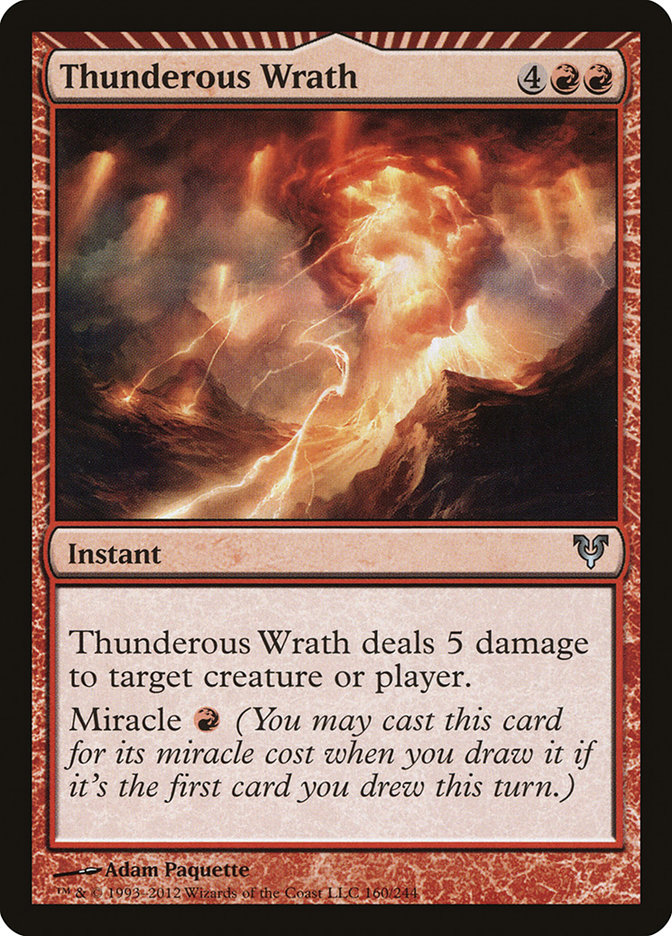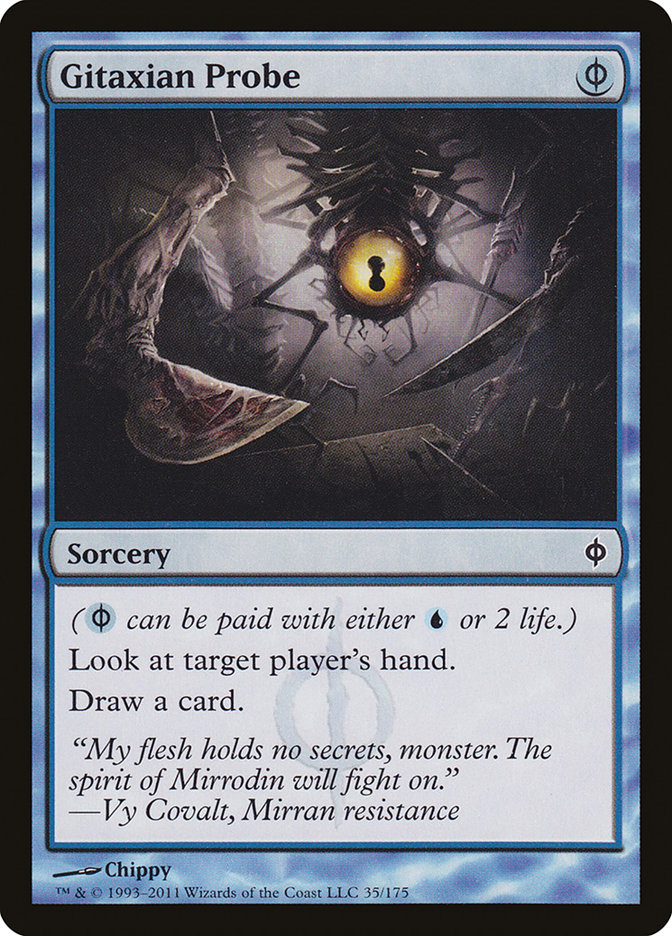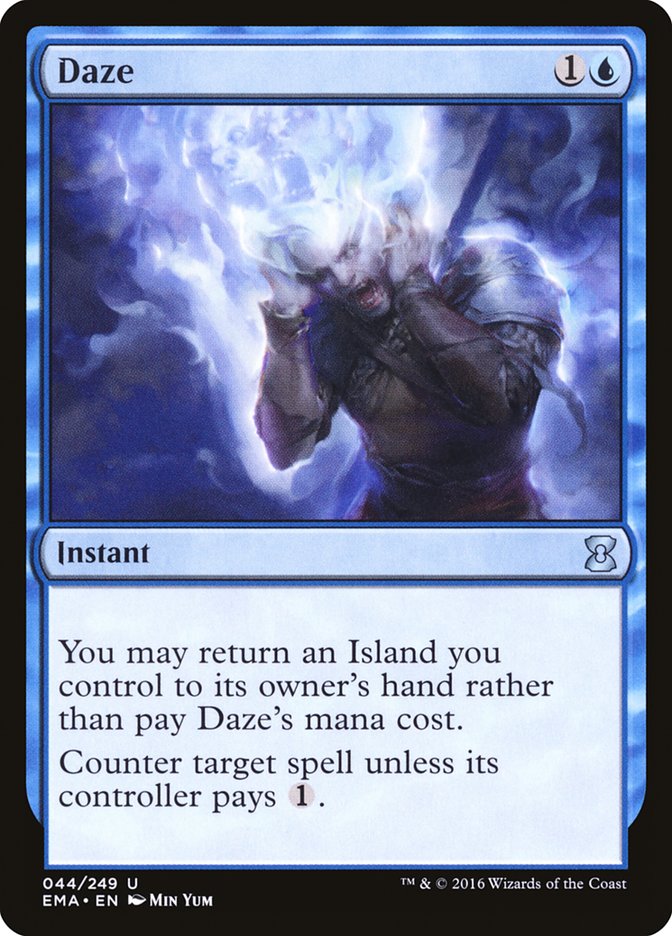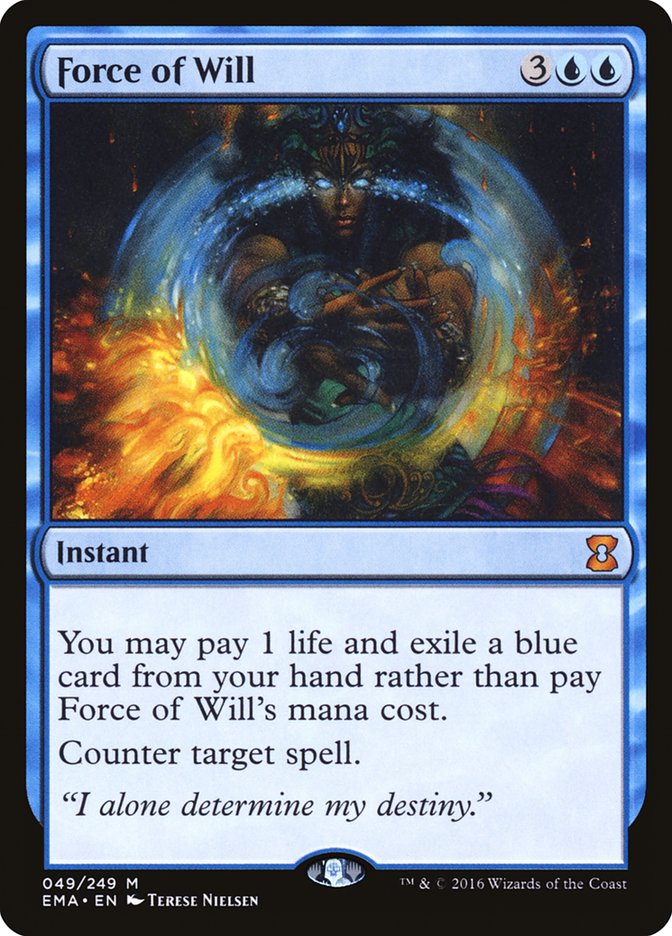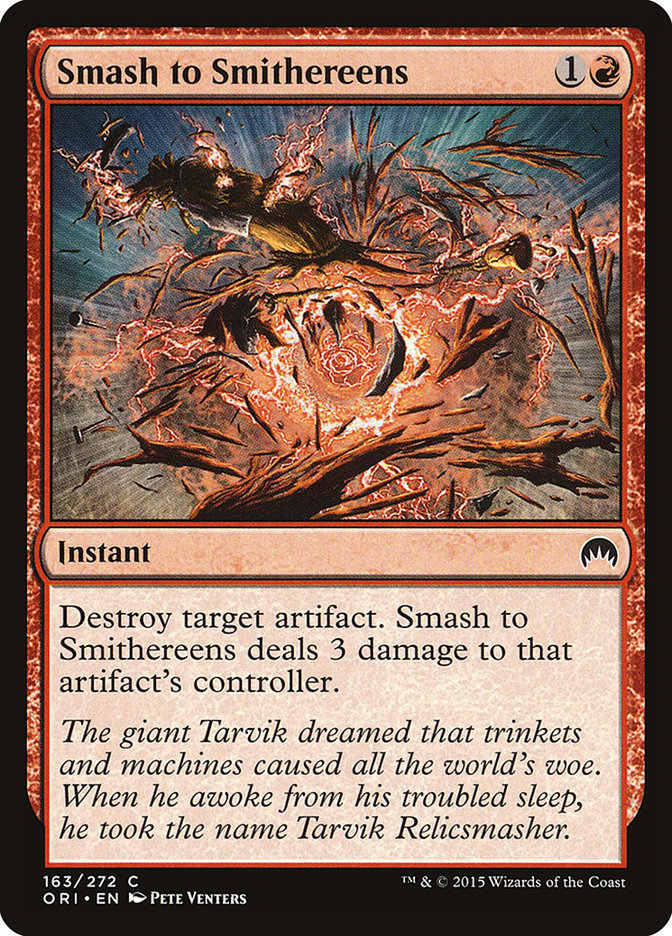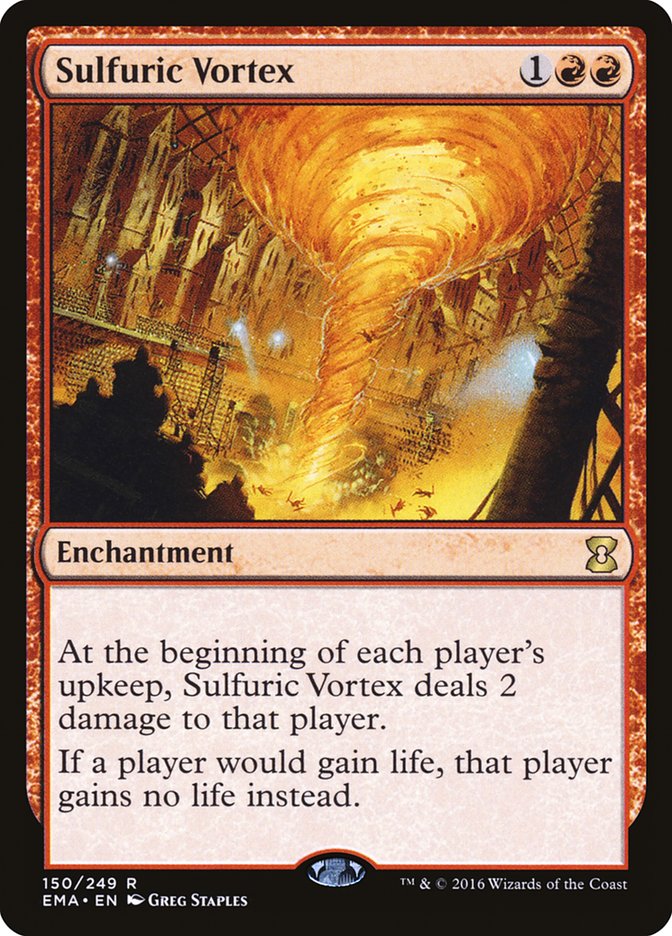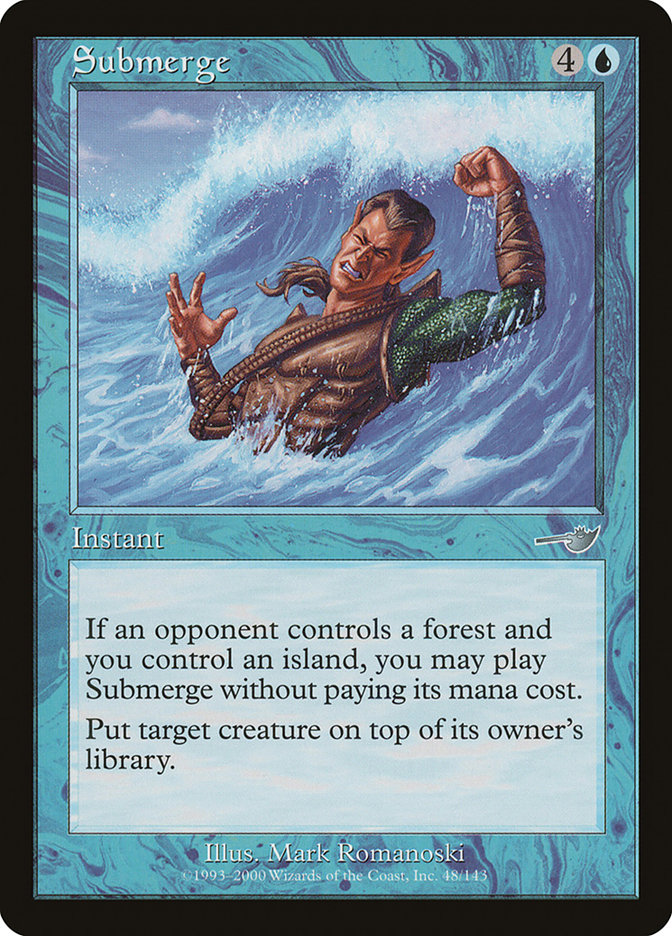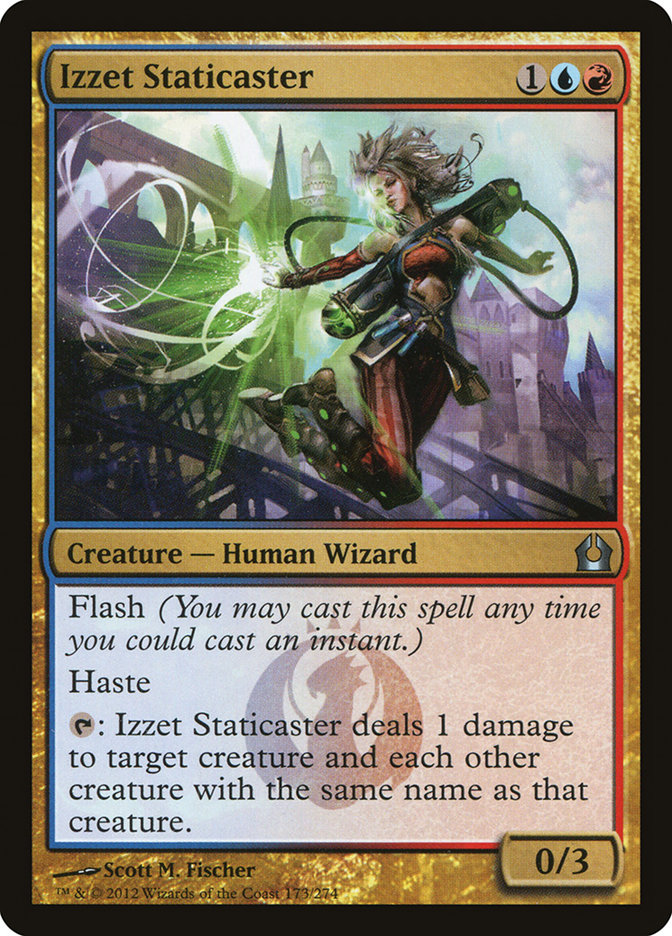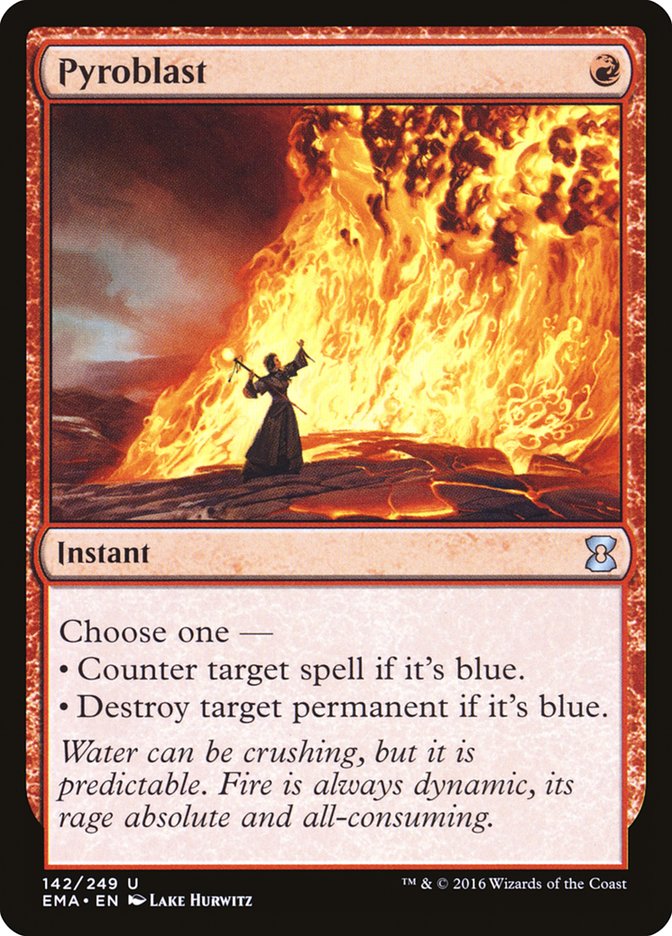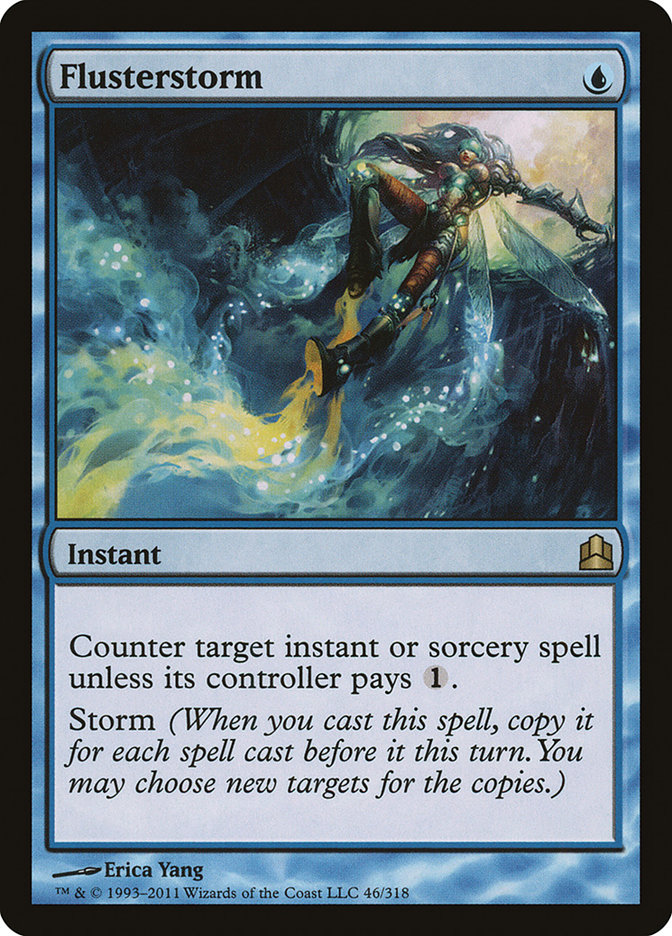What do these two-drops all have in common?
That’s right! They’re all Legacy-playable!
The first time that former teammate and current friend Dalton Ozmun crushed me with his U/R Prowess deck (while we were both playing on a win-and-in for the Top 8) at a Classic in Columbus last year, I couldn’t believe what’d just happened. Despite playing what I felt was one of the de facto best decks of the format (Four-Color Delver, specifically), the games didn’t feel particularly close.
After our match, Dalton began talking to me about his matchups against the format and it became harder and harder to ignore the allure of his deck:
Creatures (13)
Lands (16)
Spells (31)

After jamming a relatively low number of games and making some tweaks to the sideboard, I piloted the deck to an 11-4 finish (finishing just outside of Top 64 on tiebreakers) and couldn’t have been happier with the deck. Two of my losses were to my own mistakes, and with a bit more tuning, the deck is a very real contender.
I’ve been streaming the deck more than a little (including an all-day Legacy stream last Saturday for the monthly Legacy Challenge) and have gained a strong understanding with the deck, with roughly 100 hours with the deck in the last couple of months. Here’s the list that I’m currently playing:
Creatures (13)
Lands (16)
Spells (31)

Why U/R Prowess?
U/R Prowess is still sitting in a sweet spot of being just under the radar enough for people to not know quite everything to play around. While U/R Prowess is starting to become more and more of a player in Legacy, many people also confuse it for the older iterations of the deck that were piloted by Andrew Schneider in a different era of Legacy. The lack of a “standard” list of cards that go in the deck, coupled with the aforementioned misconception, leads to people playing around a plethora of cards that may not even be in the deck…
One benefit of playing this particular deck is that it gets to employ a tactic that I like to call “fighting with a scalpel.” What this means is that zero of the cards in the deck are particularly powerful (most people have figured out how to play around a Price of Progress at this point). The phrase relates to the idea that non-interactive combo decks are “glass cannon” decks (fragile yet explosive). “Fighting with a scalpel” means that while nothing you’re doing is particularly powerful, everything in the deck has a use, and figuring out how to use your resources as they need to be used in a given matchup will lead to a clean, precise victory.
Very few matchups are truly “free wins” with this deck, but similar to most tempo-oriented Daze decks, most matchups are incredibly winnable; the margin for pilot error just varies pretty drastically from matchup to matchup. Beating a slower deck without a hard lock a la Shardless Sultai isn’t going to be nearly as difficult as beating the one-sided Chalice of the Void that Miracles can provide via their signature Counterbalance-plus-Sensei’s Divining Top combo.
Card Choices
These are sort-of “gimmes” that aren’t too surprising to see in the archetype. When Treasure Cruise was still legal in Legacy, Monastery Swiftspear was one of the premier one-drops of the format, and Delver of Secrets competes with Deathrite Shaman as the most commonly played one-drop creature to this day.
When you have an efficient creature on turn 1 that can apply pressure, it turns all of your disruption spells into burn spells that also disrupt the opponent. If you control Insectile Abberation, a Daze countering a removal spell is going to translate to three points of damage going to the opponent’s face. Casting a Chain Lightning on an opposing Deathrite Shaman or Mother of Runes while you control Monastery Swiftspear is going to be converted to the opponent’s life total getting closer and closer to zero. Delver of Secrets and Monastery Swiftspear are the two creatures that are going to play the best with this theory, and their inclusion is a no-brainer.
Stormchaser Mage is likely the card that raises the most eyebrows with the deck and is honestly not particularly spectacular at anything. Stormchaser Mage’s real strength is in its versatility, providing:
- An evasive threat against creature decks
- A blue card to exile with Force of Will against unfair decks
- A fantastic blocker (when coupled with an instant) against other Delver of Secrets decks (Brainstorm making Stormchaser Mage a 2/4 is quite good against Delver’s Insect form)
- A hasted threat for big-damage turns
- A threat that can be resolved through Chalice of the Void for one
Stormchaser Mage is generally going to be a two-mana spell that will deal anywhere from four to ten damage, depending on how long the game goes. Despite Legacy’s inherent power level, there is a sore lack of flying creatures. Flying tends to equal unblockability, and in a deck that is as damage-oriented as this archetype, that’s a boon that can’t be ignored.
Bedlam Reveler is a tough one. It’s the top-end of the deck and was originally added to fill the hole that Treasure Cruise’s banning left. First, this card definitely is not Treasure Cruise. Against the faster matchups (specifically most things combo-oriented), the card is just too slow.
Where Bedlam Reveler shines is against the fairer creature matchups, where the deck’s burn spells tend to get pointed at creatures rather than the opponent. In these matchups, Bedlam Reveler’s body is incredibly relevant (surviving Lightning Bolt, Abrupt Decay, and Fatal Push is no joke) and the Concentrate is a very welcome effect.
The issue with the card is that it ends up stranded in-hand during the earlier parts of the game and is literally unplayable in multiples (the first resolved copy just discards the second one). I’ve waffled on the second copy of Bedlam Reveler multiple times; I like it for now, but seeing it come out of the deck from time to time isn’t unheard-of. The card’s power level makes it hard to justify cutting in its entirety, as many matchups are shifted on their head when Bedlam Reveler comes out to play.
The burn suite is relatively standard for this type of deck. The eight Lightning Bolt effects are likely the most versatile cards in the deck, disrupting the fair creature decks and changing the clock against unfair decks. Having Chain Lightning do its best Lava Spike impression feels unfair when coupled with prowess creatures, effectively dealing an extra point of damage for each prowess creature its caster controls.
Price of Progress is only a two-of in the maindeck due to its ineffectiveness against the fair decks with copious amounts of basic lands (see: Miracles, Burn) and decks that plan to win with two or fewer lands on the battlefield (Reanimator, Storm, etc.). It is likely the most powerful red card in the format, but the context of the matchup is so important that it’s hard to justify play more than the pair. Between Ponder, Brainstorm, and Gitaxian Probe, it isn’t hard to find one- and two-ofs in the deck in the matchups where they’re important, but the precision of the deck requires a minimization of dead draws in the deckbuilding process.
Fireblast is in a precarious position of wanting to be seen every game, yet the second copy being almost uncastable. It’s incredibly difficult for decks to play around a zero-mana four-point instant-speed burn spell and the power of Fireblast isn’t really up for debate. The aforementioned deckbuilding restriction (reducing the number of dead draws) means that it isn’t realistic to play more than one Fireblast. In lieu of the second Fireblast, we play…
No, seriously, this card is great.
When Thunderous Wrath was first printed, it was played in a number of Burn decks, but the frequency of decks having it in their opening hand make it harder to justify. In a deck with as much library manipulation as this one, casting Thunderous Wrath for its miracle cost is trivial. There are cases where you have to keep an opening hand with Thunderous Wrath, but it just gives you another excuse to appreciate just how broken-in-half Brainstorm is.
The floor-to-ceiling (or risk-to-benefit) ratio with this card is off the charts. I’ve already won over a dozen games because of Thunderous Wrath when there were very few other cards in the game of Magic that would’ve done the trick. Having a single-card answer to Gurmag Angler or Tarmogoyf that can also go to the opponent’s face has value that seriously cannot be understated.
Gitaxian Probe has always been a complicated card to evaluate in-game, and Modern’s most recent banned member is even more complex in this deck. Because of the prowess triggers in the deck, sandbagging Gitaxian Probes until multiple Monastery Swiftspears and/or Stormchaser Mages are on the battlefield is a regular angle of attack. Making Monastery Swiftspears large enough to punch through blockers is a serious consideration that comes up more frequently that one would expect.
The information isn’t entirely trivial in this particular deck, helping you figure out how to value the spells in your hand relative to the opponent’s resources. A high number of Gitaxian Probe decks are more linear than this deck and just want to use Gitaxian Probe to make sure “the coast is clear” so-to-speak, but understanding the best time to pull the trigger (or not) takes a strong understanding of Legacy and your role in a matchup. There are even times when holding the Gitaxian Probe in hopes of pitching it to Force of Will is the correct line; Gitaxian Probe and Daze are the blue cards in the deck with the lowest power levels, after all.
Including explanations for Daze and Force of Will in a deck featuring Delver of Secrets seems a bit silly, but the cards have complicated roles in the deck, and I want to take a minute to talk about Daze in particular.
To address the elephant in the room off the bat, I’ve elected to only maindeck three copies of Force of Will because it is the worst card in the deck by a significant margin. Very few cards in Legacy are worth the inherent two-for-one that comes from exiling a card to Force of Will. Force of Will is the first card sideboarded out of this deck in approximately 60% of matchups, and drawing a second copy of the counterspell is only good if you haven’t cast the other copy yet; it makes it easier to decide which card to exile to the first copy (hint: It’s probably the second Force of Will).
Daze fulfills a pretty insane number of roles. In addition to being early disruption and helping the deck continue to hit land drops each turn (effectively making the spell cost zero), the Force Spike-on-steroids also works as a pseudo-Mutagenic Growth when used in tandem with prowess creatures (when targeting their controller’s own spells and then paying the single mana). Seriously, countering your own spells comes up more than one would think.
In Louisville, for example, I won a game on turn 3 via countering several of my own spells. The opponent was on Reanimator and had fifteen life. I controlled two Volcanic Islands, Monastery Swiftspear, and Stormchaser Mage, with the following hand:
After casting Gitaxian Probe for two life to make sure the coast was clear (making both creatures have two power), I Lightning Bolted the opponent (three power), Dazed my own Lightning Bolt (four power), floated a blue mana and Dazed my own Daze (five power), and finally Flusterstormed the original Daze again (six power) to deal fifteen damage to the opponent. These scenarios happen roughly once every three to four matches, so be sure to keep them in mind and recognize everything that Daze can do when mapping out turns ahead of time.
Sideboarding
To reduce the amount of scrolling required, here’s a refresher on my current sideboard:
A good number of the one-ofs in the deck are selected more carefully than one might think, applying Zvi Mowshowitz’s The Elephant Method*, featuring cards that one may expect to be included in the maindeck (looking at Grim Lavamancer, Price of Progress, and Force of Will specifically).
*If you haven’t read this article, you’re doing yourself a very serious disservice.
This approach to building a 75 rather than building a 60 means that several of the sideboard cards are relatively “set in stone” for being in the deck.
This is secretly the best card in the sideboard. Think of it as a Searing Blaze for cards that are more problematic than creatures. Having a card that destroys Chalice of the Void, Sword of Fire and Ice, Batterskull, Umezawa’s Jitte, and Ensnaring Bridge while dealing damage to the opponent is a dream come true. Many times, when spending cards to interact, that is a card that isn’t dealing damage to the opponent or putting them closer to dead. The longer the game goes, the less it tends to favor this deck. Monastery Swiftspears are near, but they don’t match up particularly well with copies of True-Name Nemesis, large Tarmogoyfs, or Monastery Mentors.
Outside of turning off the lifegain from problematic permanents, Sulfuric Vortex is oftentimes a three-mana burn spell that deals anywhere from four to ten damage. Including Sulfuric Vortex in the sideboard is a way to attack decks from a different angle and it being a sticky permanent is exactly what this deck needs in this slot. There are multiple matchups that go long, and having a card like Sulfuric Vortex is going to force the opponent in a position where they have to take on a more aggressive role that they aren’t prepared to execute.
Submerge is a card that I’ve tinkered with the numbers on, but generally one has stuck out as correct. When a single copy is coupled with pressure against creature decks, Submerge does an excellent Time Walk impression while also being able to do cute tricks against decks like Lands (dealing with Marit Lage tokens can be troublesome) and Knight of the Reliquary (Submerge the Knight in response to their activating her ability; it forces the opponent to shuffle away the Knight of the Reliquary when its ability resolves).
Never leave home without a single copy of Submerge.
The other cards in the deck are either maindeck-able cards or a bit more malleable. If there were cards that I considered “flex” slots, they would be:
Izzet Staticaster is a bit of a pet card for me and could be a few different cards that perform similar tasks. Similar to Stormchaser Mage, Izzet Staticaster isn’t the most powerful or efficient way to do what it is doing, but it is incredibly versatile. I’ve won games against Elves through cards like Quirion Ranger and Wirewood Symbiote because the Staticaster activations were staggered over the course of multiple turns and have pitched Izzet Staticaster to Force of Will. On the other hand, I’ve also died with Staticaster stranded in my hand against the Wastelands and Rishadan Ports that Death and Taxes are known for.
Rough//Tumble is the other card in this slot that I like against the Elves and Death and Taxes “little-kid” creature decks. If the goal is just to beat up on Death and Taxes, it’s entirely plausible to just play Sulfur Elemental in this spot, as it has splash applications against decks like Miracles.
This is to say that the third copy of Surgical Extraction is relatively optional. I’ve never played less than two without regretting it, and I love the third copy. It being a free spell is something that this deck makes fantastic use of (at times doing the same Mutagenic Growth impersonation that Daze can do) but the Reanimator decks can be an enormous problem (racing a Griselbrand as a French Vanilla flying, lifelink 7/7 is nigh-impossible) and having a bit of extra padding for that match-up is incredibly welcome. The zero-mana aspect of Surgical Extraction is also incredibly helpful due to its ease in playing through a start-of-game Chancellor of the Annex reveal.
Instead of Surgical Extraction, it’s entirely possible that another matchup should be shored up. Surgical Extraction is the best way to generate its effect in this archetype, so removing it from the deck would be for a card that does something very different; more on general sideboard cards later.
Pyroblast is a card that has been in and out of the deck as of late, but being able to counter Counterbalance and True-Name Nemesis while destroying problematic permanents like Insectile Aberration is just as good as it sounds. Pyroblast being able to just target spells and permanents for the sake of casting a spell also plays well with the prowess theme of the deck. Pyroblast tends to just be a bit of a catch-all against the over-saturation of blue in Legacy, but most blue matchups aren’t particularly bad for this deck. Pyroblast’s inclusion is more to easily replace Force of Will or Daze with a better counterspell post-sideboard against anything blue, really demonstrating The Elephant Method at work.
These cards are flexible in that they can become each other, but both need to be included in the deck. Flusterstorm and Spell Pierce are both good at doing very specific things (Flusterstorm is a better card for a smaller number of cards, Spell Pierce being the inverse), and having single-mana countermagic post-sideboard is key in most of the combo matchups. Price of Progress and Chain Lightning are pretty embarrassing against Reanimator and Storm, but Spell Pierce tends to do to spell-based decks’ early cantrips what Chain Lightning does to creature decks’ early threats.
I’ve rotated several cards in and out of the deck throughout playtesting, and while the maindeck is pretty close to set where I want to be (with a Bedlam Reveler being on the chopping block at the moment), the sideboard is constantly evolving. For cards that have specific uses, I try to keep those within their niches (graveyard hate for graveyard hate, etc.), but for the more general sideboard cards, it gets a lot hairier. The “general” sideboard cards that have made their way in and out of the deck so far are:
It’s hard to describe the uses for every single one of these cards, but they all have their strengths and weaknesses against expected metagames. Building the deck to accommodate these cards and seamlessly sideboard them in and out is the really tricky part. Most of the deck can’t really be sideboarded out (I can’t think of a matchup where I want to cut Monastery Swiftspear, Delver of Secrets, Brainstorm, Ponder, Gitaxian Probe, Stormchaser Mage, or Lightning Bolt) and diluting the synergies of the deck is dangerous, as the cards in the deck have a low power level relative to the rest of the format.
Preparing for #SCGBALT
This weekend is the #SCGTour‘s first multi-format Team Open, and I couldn’t be more excited to be sitting in the Legacy chair. Between now and then, there are still more games to jam and cards to try out (the next thing I plan to do is try out either a Snapcaster Mage or Vendilion Clique over the second Bedlam Reveler) in preparation for the event.
If this article hasn’t properly captivated my excitement for U/R Prowess, nothing will. I’m a closet Burn player, and one of my favorite things about this deck is that it’s a burn deck th…
@thequietfish how is this difficult? @Em_TeeGee
— Elliot Raff (@egooglegon) February 14, 2017
Oh. Okay. Well. The deck’s great, I love it, and this weekend is going to be wonderful. Make sure to drop by and say hi!




